Glossary of Banking Terms
B
- Banking mobility
I
- Instant transfer
- Insufficient funds
- Insurance
- Interest
- Interest income
- Interest rate
- Investment bank
- Investments
- ISIN (International Securities Identification Number)
J
- Joint account
K
- KYC (Know Your Customer)
L
- Livret A
- Loan
M
- Maestro Card
- Main account
- Maintenance fee
- Mastercard
- Metal card
- Minimum balance
- Mobile banking
- Mobile payment
- Mobile wallet
- MoneyBeam
- Mortgage
- Mutual fund
N
- Net salary
- NFC (Near field-communication)
- NFT (Non-fungible token)
- Nominal interest rate
O
- Online bank
- Online banking
- Online payments
- Open banking
- OTP (One-time password)
- Overdraft
- Overnight money
P
- P2P payment
- Pair device
- Pairing code
- Password
- Payment services
- Perks
- Personal loan
- Phishing
- Phone insurance
- PIN (Personal Identification Number)
- POS (Point of Sale)
- Prepaid card
- Prime Rate
- Privacy Policy
- PSD2 (Payment Services Directive 2)
R
- Rating
- Rating agency
- Real interest rate
- Reference interest rate
- Refinancing
- Refund
- RIB (Relevé d'Identité Bancaire)
- Round-ups
- Routing number
- Rules
S
- Safe custody
- Savings account
- SCA (Strong Customer Authentication)
- Scheduled transfer
- Security
- SEPA (Single Euro Payments Area)
- Service charge
- Simple interest
- Smartphone
- Solvency
- Sort code
- Split payment
- SSL (Secure Socket Layer)
- Standing order
- Statement
- Sub-account
- Surcharge
- Swap
- SWIFT (Society for Worldwide Interbank Financial Telecommunications)
T
- TAE (Tasa Anual Equivalente)
- TAN (Transaction Authentication Number)
- Taxes
- Terms & Conditions
- Time deposit
- TIN (Tipo de Interés Nominal)
- Top up
- Transfer
V
- Variable rate
- VAT (Value Added Tax)
- Virtual card
- Visa
W
- Web app
- Wire transfer
- Withdrawal money
- World Bank
Find a plan for you
N26 Standard
The free* online bank account
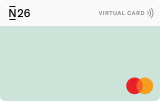
Virtual Card
€0.00/month
A virtual debit card
Free payments worldwide
Deposit protection
POPULAR
N26 Go
The debit card for everyday and travel
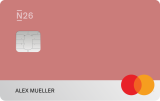
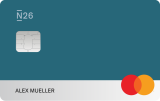
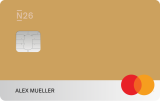
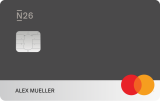
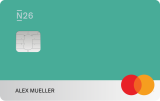
€9.90/month
Up to 5 free withdrawals in the Eurozone
Flight and luggage delay cover
Medical emergency cover
Winter activities insurance
Pandemic coverage
N26 Metal
The premium account with a metal card

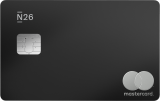
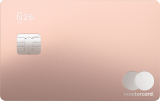
€16.90/month
An 18-gram metal card
Up to 8 free withdrawals in the Eurozone
Purchase protection
Phone insurance
Dedicated N26 Metal line